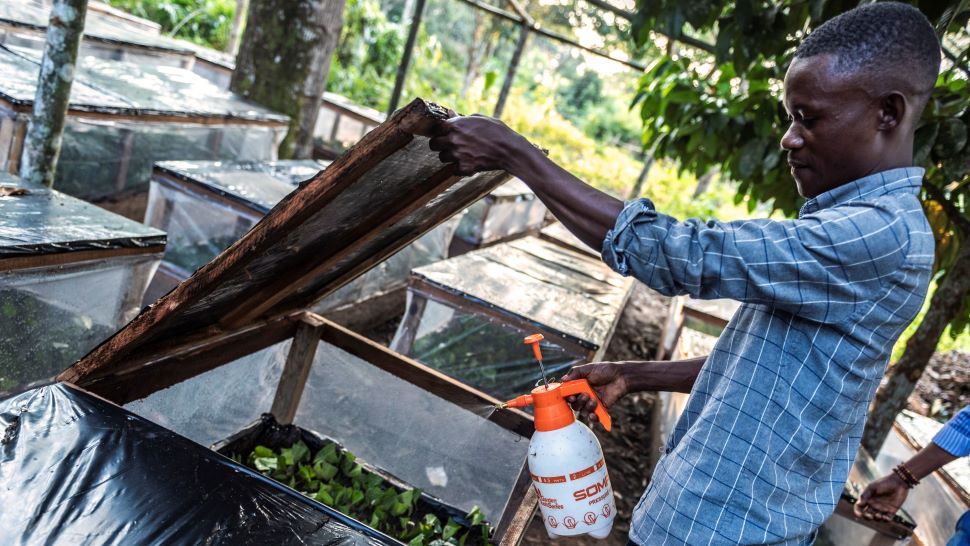Fumbwa (Gnetum africanum) is a wild vine with thick papery leaves found in the tropical forests of Africa. “It is one of the staple foods in Kongo Central, but it is also one of the forest products that are in danger of disappearing”, explains Bueno Ngenga Thomas, co-ordinator of the Rural Initiative for Integrated Development (RIID), which works with local communities in this province of the Democratic Republic of the Congo (DRC) to preserve the forests that are key to combatting climate change.
Kasangulu, one of the district’s 10 territories, lies in the northern part of Kongo Central; the extraction of charcoal and firewood are the region’s primary economic activities. Because only 11% of the DRC is serviced by the country’s electrical grid, these fuels are the country’s primary source of energy, and offer higher profits than agriculture for the territory’s rural population. The national capital Kinshasa - less than one hour away by road – represents a profitable market for Kasangulu’s fuels. But this trade comes at a steep price: as people harness trees for economic gain, the region’s rich tropical forests are quickly disappearing with devastating environmental consequences.
Fumbwa is typically found growing on forest floors, where it thrives year-round, protected by shade. It was originally used by the Bakongo ethnic group in Kasangulu for food and medicine, but today it is eaten routinely in all the DRC’s provinces, thanks to its pleasant taste, accessible price, and high nutritional value. As a result of deforestation, fumbwa has almost disappeared in Kasangulu. Local sellers now must source it from other provinces, which increases transportation costs and affects the vegetable’s final price.
With support from the Global Environment Facility’s Small Grants Programme, in July 2020 RIID launched a project to address the shortage of fumbwa in Kasangulu while promoting sustainable forest management, thereby restoring the local ecosystem and increasing local people’s income. Read the full story here.





